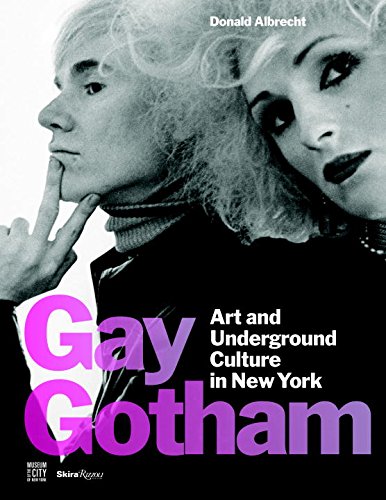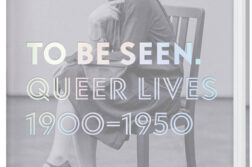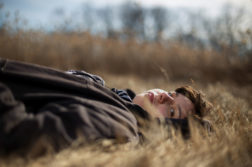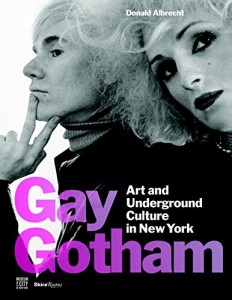 WHAT AUTHOR-CURATOR Donald Albrecht has admirably set out to document is how the gay and lesbian avant-garde of 20th-century New York worked and played together, sometimes sexually, and often as mentors and collaborators. Gay Gotham—and the exhibit at the Museum of the City of New York—explores the lives and peer networks of seven gay and lesbian artists, with Andy Warhol, Leonard Bernstein, and Robert Mapplethorpe as the marquee names. Less famous but still significant are Harlem Renaissance artist, writer, and actor Richard Bruce Nugent; flapper-era lesbian bon vivant Mercedes de Acosta; mid-century photographer George Platt Lynes; and mixed-media artist Harmony Hammond.
WHAT AUTHOR-CURATOR Donald Albrecht has admirably set out to document is how the gay and lesbian avant-garde of 20th-century New York worked and played together, sometimes sexually, and often as mentors and collaborators. Gay Gotham—and the exhibit at the Museum of the City of New York—explores the lives and peer networks of seven gay and lesbian artists, with Andy Warhol, Leonard Bernstein, and Robert Mapplethorpe as the marquee names. Less famous but still significant are Harlem Renaissance artist, writer, and actor Richard Bruce Nugent; flapper-era lesbian bon vivant Mercedes de Acosta; mid-century photographer George Platt Lynes; and mixed-media artist Harmony Hammond.
Chapters on these seven appear within the book’s three sections: “1910-1933: Visible Subcultures”; “1933-1969: Open Secrets”; and “1969-1993: Out New York.” Each section delineates the socio-cultural setting of the time, including numerous short profiles of writers, composers, dancers, visual artists, and their patrons in each period. So conspicuous were gay artists and writers during the Modernist period that rumors spread about the existence of “Homintern” cabal bent on taking over the arts. Gay Gotham quickly namechecks Edward Albee, Tennessee Williams, and Aaron Copeland as some of the artists who fell under this nefarious shadow of deviant innuendo.
Among those implicated was Leonard Bernstein, who was married with children and largely managed to keep his active (gay) sex life out of the public eye, even though he frequently collaborated with gay artists. In 1944, he teamed up with choreographer Jerome Robbins and set designer Oliver Smith, creating the ballet Fancy Free based on The Fleet’s In!, Paul Cadmus’ bawdy and homoerotic 1934 painting. West Side Story, the beloved 1957 musical, was created by a gay sextet when Bernstein, Robbins, and Smith joined forces with lyricist Stephen Sondheim, author Arthur Laurents, and costume designer Irene Sharaff.
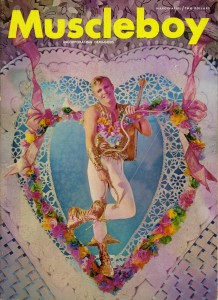 While Bernstein and company were the toast of Broadway, Allen Ginsberg, William Burroughs, and Ann Bannon were carousing down in Greenwich Village; all get a nod in the text and quick photo op. The chapter on Warhol is eye-opening for its consideration of the artist as a young man in New York earnestly cultivating a network of friendships and sexual relationships. Reproductions of small, intimate works by Warhol—jaunty drawings he made for friends and playful designs of invitations to exhibitions and parties—show a warm side to the artist whose emotions grew more opaque as he gained fame. A candid photo of Warhol at Truman Capote’s 1966 “Black and White Ball,” standing behind curator Henry Geldzahler (with pop art style mask), aptly depicts him at the convergence of New York society with the city’s gay arrivistes.
While Bernstein and company were the toast of Broadway, Allen Ginsberg, William Burroughs, and Ann Bannon were carousing down in Greenwich Village; all get a nod in the text and quick photo op. The chapter on Warhol is eye-opening for its consideration of the artist as a young man in New York earnestly cultivating a network of friendships and sexual relationships. Reproductions of small, intimate works by Warhol—jaunty drawings he made for friends and playful designs of invitations to exhibitions and parties—show a warm side to the artist whose emotions grew more opaque as he gained fame. A candid photo of Warhol at Truman Capote’s 1966 “Black and White Ball,” standing behind curator Henry Geldzahler (with pop art style mask), aptly depicts him at the convergence of New York society with the city’s gay arrivistes.
While Warhol was methodically steering his way toward mass visibility, Harmony Hammond joined a vanguard of feminist artists and writers, many of them lesbians, who provided each other with the support they needed to come out. A co-founder in 1972 of A.I.R. Gallery in SoHo, the first women’s cooperative gallery in New York City, Hammond went on to curate the landmark 1978 exhibition, A Lesbian Show, which presented the works of eighteen artists at 112 Greene Street Workshop. The chapter in Gay Gotham about Hammond, who is still alive, covers only about ten years of her life, but it’s easy to imagine it as the basis for a fuller monograph.
Even though Robert Mapplethorpe only had to travel the short distance from his home in Queens to get to the pad he and Patti Smith shared at the Chelsea Hotel, he is the figure in Gay Gotham who best exemplifies the magic of what could happen when a talented artist landed in the big city. He got to hang with the Warhol crowd, enjoy the city’s sex clubs, and meet Samuel Wagstaff Jr., who would become his mentor, lover, and benefactor. The photos of the young Mapplethorpe at the Chelsea, pages from his early scrapbooks, and the examples of his work becoming more technically sophisticated are bittersweet. It’s a creative trajectory, a vibrant life, cut down by AIDS when Mapplethorpe was only 42 years old.
Gay Gotham comes to a close with a 1992 Banana Republic ad campaign called “My Chosen Family” that features same-sex couples photographed by Bruce Weber. This representation of queer imagery in the mainstream was unparalleled for the time, yet in hindsight the campaign’s photos of pretty men and women in sweet poses are æsthetically banal. Turn back the pages of the book and study the deft artistry of Weber’s predecessors George Platt Lynes and Carl Van Vechten, whose photos were produced at a time when they could not be widely disseminated.
Still, it would be ungrateful to begrudge hard-won progress—even in the form of same-sex imagery promoting retail therapy—that helped further lgbtq visibility. As Gay Gotham admirably documents, in 20th-century New York pioneering gay and lesbian artists had to cultivate networks of patrons, mentors, peers, and lovers to find needed validation and support. The result was not just a thriving underground culture in the city, but an outpouring of art, literature, dance, theater, music, and design that changed the cultural landscape of New York and beyond.
Gay Gotham: Art and Underground Culture in New York
by Donald Albrecht
Rizzoli, 304 pages, $65.


